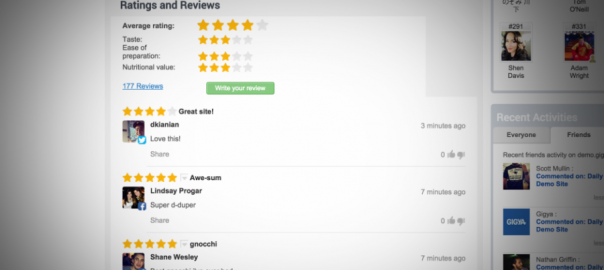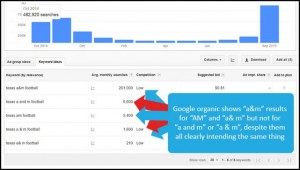To reach customers with a level of relevance that grows conversions and loyalty, marketers must understand their users. We’re not talking about observing anonymous on-site behaviors and researching general browsing habits – we’re talking about really learning who they are.
Prompting users to self-identify by registering and logging in on your sites and applications is necessary, but easier said than done. Here are three strategies to help you convert unknown users, eliminate reliance on anonymous data and get to know your customers more granularly.
Create Points Of Engagement
Requiring users to identify themselves and provide you with their personal information requires some incentive. The ability to seamlessly and directly interact with your brand and site community encourages users to not just register for your site, but also to log in and engage time and again. Consider these notable engagement statistics:
- 32% of companies using ratings & reviews saw a registration conversion increase of more than 50%
- 30% of brands using comments were able to boost registrations by 25-49%
- 30% of companies using gamification improved registration conversion rates by upwards of 50%
Engagement is only as valuable as the insight it generates. Providing site visitors with ways to interact directly with your brand results in a greater quantity and quality of data to guide the creation of personalized user experiences, more focused content strategies, lucrative product roadmaps, and much more.

Implement Single Sign-On (SSO)
Driving registration flows across a single web property can be difficult, but for brands with multiple domains, this challenge can be two, three or even ten times more difficult. Single Sign-On (SSO) allows users to authenticate just once and move seamlessly across your web properties.
SSO syncs logged-in states as users navigate from one of your web properties to another, or to a third-party application that sits within your site. Allowing users to leverage the same identity across domains facilitates a single, complete customer view, as well as simplifies back-end identity data management for enterprises.
For example, as properties of a larger parent company, Food Network, HGTV, and DIY Network enable users to log in on just one of these sites, and then unlock the ability to navigate across all three properties while maintaining their logged-in states.

Link Anonymous Data To Known Users
By employing cookies across web properties, brands have compiled masses of anonymous user data. While this data gives some insight into behavioral trends for site visitors, it fails to uncover the interests and identities driving these actions. What’s more, device-specific data is becoming increasingly unreliable as users connect and share across a growing number of mobile devices.

Integrations between identity management solutions and DMPs or automation tools make it possible to link existing, anonymous consumer data to known user records once a user registers on-site. When a user registers, your site can send the now authenticated user’s site ID to your DMP, and the known user is synced to the DMP against the anonymous ID and data on record for that user. Moving forward, the user’s identity data can be passed directly from the identity management platform to the DMP and attributed to the correct user based on the site ID match – even across devices and domains.
User anonymity is a major stumbling block for many businesses. To read even more tips about turning anonymous site visitors into known customers, download our Social Login 101 white paper.
(216)
Report Post







